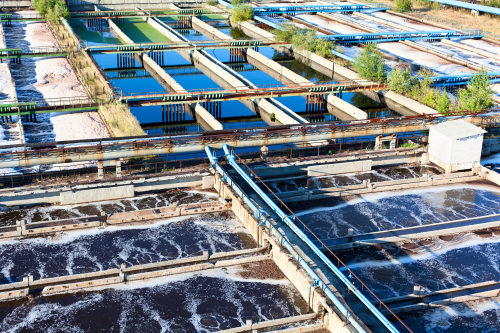
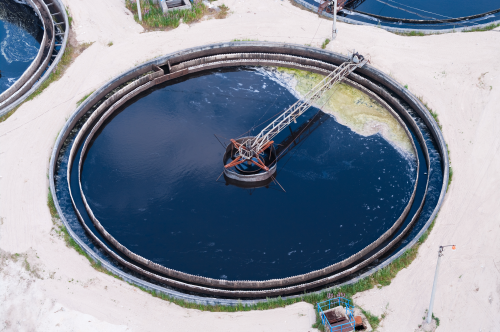
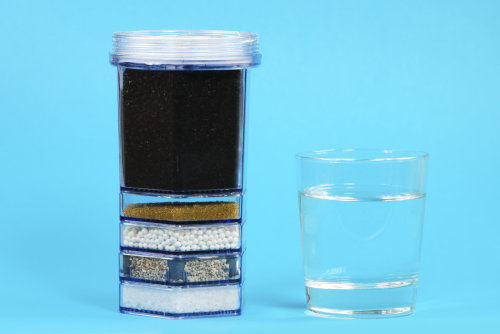
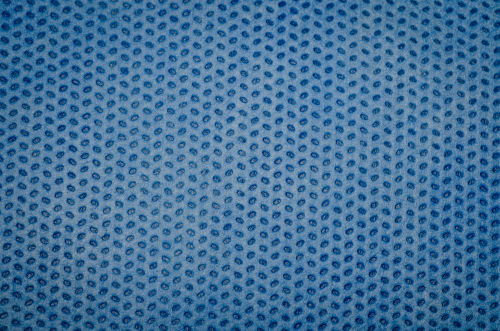
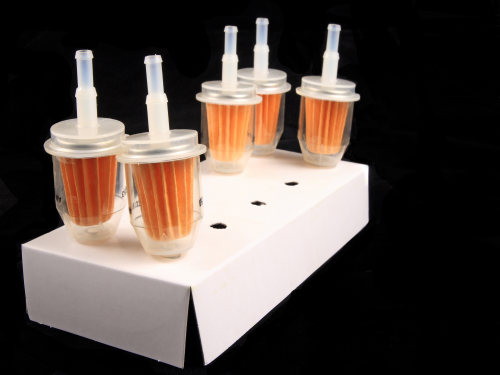
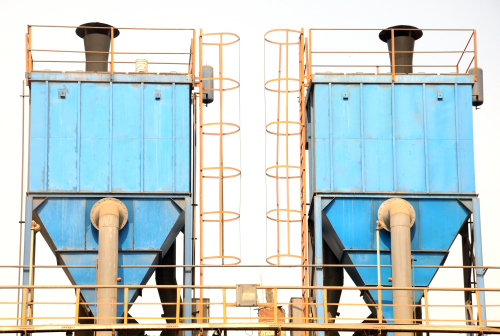
The first article in this series looked at the two main driving forces in the filtration business –finer filtration and higher operating temperatures – and how they are being approached (by the use of membranes and ceramic media, to a large extent). Although these two types of media are an important part of the filtration industry, they are by no means the bulk of it, as is shown in Table 1, which gives a simplified classification of filtration and sedimentation equipment, in ten broad categories. Bearing in mind the statement in Part 1 about any filter and its associated filter medium (that the former exists only to support the latter), it must be remembered that seven of the types of filter given in Table 1 (i.e. all of them except for the membrane filter category) are capable of accepting just about any of the various types of filter medium. An equally simple array of the basic types of filter medium, classified by physical format, is given in Table 2. The developments over the past half-century, in both filtration equipment and associated media, are now described, roughly in the order of these two tables. The media and equipment that were available on the market in 1963 were perfectly acceptable at that time, even if membranes and the range of nonwoven polymeric materials had yet to make any real impact on the marketplace. What has caused the developments to be reviewed in this article have mainly been the demands of the end-user industries, although the filter makers’ needs to be able to pack the maximum filter media area into a given filter volume, for the lowest possible cost, have been, and continue to be, an important factor in the market.
| Gravity sedimenters |
| Centrigugal sedimenters |
| Screens and strainers |
| Depth filters |
| Vacuum filters |
| Centrigugal filters |
| Bag and cartridge filters |
| Membrane filters |
| Pressure vessel filters |
| Filter presses |
| Packed beds of granules |
| Coarsely porous sheets and tubes |
| All felts, including spunlaced |
| Papers, both cellulose and glass, and filter sheets |
| Woven fibres and filaments |
| Knitted filaments |
| Spunmelt polymers, plus glass and carbon |
| Polymeric membranes, porous or semi-permeable |
| Ceramics of all types, including membranes |
| Metallic media, including wire mesh and plates |
| Constructed cartridges |
Sedimentation
Separation by sedimentation is a very old process, and, considering gravity sedimentation particularly, perhaps the oldest. The use of gravity as the separating force requires large land areas, but, provided that the land is available, this is still an effective and efficient process. However, there is not always sufficient land, so that considerable development has gone into improving the clarification process in order to achieve the same separation efficiencies in a smaller ground area. This has led to the mechanically assisted clarifiers and thickeners, whose performance has been markedly improved by the use of coagulants and flocculants mixed with the feed suspension. The appearance of synthetic flocculants several decades ago gave a marked increase in separation efficiency, and modern developments have concentrated upon achieving rapid and complete contacting of the flocculant with the suspended solids. One of the ways in which the footprint for gravity settlers has been decreased was to cut the floor of the settler into several pieces, and then to stack them one above the other. The resultant tilted-plate (lamella) clarifier has become a familiar feature in sedimentation systems, either as the main separator, or as a polishing separator working on the overflow. An alternative approach is to reverse the direction of settling, by the use of flotation, with air bubbles attached to the suspended particles, to carry them upwards. Dissolved air flotation plants are now widely used for separation processes in many industries. With gravity replaced by centrifugal force, separation is greatly improved, and the centrifugal sedimenter, especially the decanter, has become a major item of separational equipment over the past 50 years, especially when allied with suitable flocculants.
Filter media
Also old, in the context of this article, is the deep bed filter, which consists of a packed bed of inert solids, usually sand. Developments of the deep bed filter include the replacement of the granular solids by a multimedia bed, which will arrange itself in order of particle size, after the bed is reverse-flushed to clean it. Primarily used for water filtration, the deep bed filter is now being used for hot gas filtration, in an enclosed system with the solids moving between filtration and cleaning zones. The packed bed of solids can also be used to remove gaseous impurities from an air stream, provided that the solids are of an adsorbent material such as active charcoal. This has led to the development of the combination filter, in which the filter medium does two jobs – such as filtration and adsorption – in one passage through the filter. A very different kind of depth filter (so-called because the filtration takes place within the thickness of the medium) is the cartridge filter that uses a thick layer of filter medium – such as a cylinder of bonded fibre – as the cartridge. This is now a very common type of filter, and one that takes advantage of the rapidly developing range of nonwoven materials, especially in air filtration. The coarsely porous types of filter tubes or candles are characterised by being intrinsically strong, moulded as they are mainly from sintered metal granules (although increasingly from plastic granules, where operating temperature is not a problem). Apart from the loss of market share to plastic, the only significant change over the years with these media has been a closer control over the granule size and shape, and hence a better filtration performance. The strength of this type of material has made it very useful as a substrate layer, supporting a thin layer of much finer media, as in the monolithic ceramic membrane structures. Another type of filter medium with a very long history is that made from felts of all kinds. Developments in this survey period have covered both the nature of the medium material, and its mode of use. Initially using natural fibres, and relying on their innate cohesion, felts are now more likely to be found made from nonwoven fibres, with tensile strength provided either by a mesh scrim laid into the felt, or by needle punching to lock the fibres together. More recently this strengthening has been achieved by hydroentanglement (‘spunlacing’), in which fine jets of water are squirted through the felt layer to interlock its component fibres. Also a long-serving filter media type is paper, wet-laid from slurries of wood (cellulose) fibres, able to give quite fine degrees of filtration, and widely used in analytical laboratories, even if easily torn. This problem of tensile strength has largely been solved by resin impregnation, and the need for finer filtration has been met by a change from natural wood fibre to extruded glass fibre. The stronger glass papers have widened the range of application for paper filters, which are usually pleated and fitted into a cylindrical or rectangular casing to provide as much filtration area as possible. Their popularity has caused these paper designs to be extended to a similar pleated format for the range of spunmelt materials, and even to membranes. Thin media, like paper, are now being produced in mini-pleat formats, mounted in V-shaped supports, and increasingly used for air filtration. For long the mainstay of the filter medium industry, woven fibres and filaments remain an important part of that industry, but with a diminished share, lost, to a large extent to nonwoven media, which are capable of providing finer degrees of filtration. A significant part of the retained market share relates to the ability of the weaver to make a fabric with precise and consistent apertures, to which end a lot of woven material is now made from single or multi-filament threads. The arrival of special coating materials on the market, able to change the filtration performance of woven materials, has given them a new lease of life. Unlike woven media, nonwovens have changed almost beyond recognition over the period covered by this article. At its beginning, felts continued to be widely used, although mainly as supported pads, and needle-punched felts were in their infancy. They then expanded rapidly, used as media for many kinds of filter, as their tensile strengths and fibre shedding characteristics improved. Surface treatments were applied, resin and thermal bonding were used to improve fibre retention properties, electrostatic behaviour was established, and as a result of which, needlefelts seemed set to become the medium of choice, especially for fine filtration. However, almost coincident with the beginning of the half-century, the development began of the extruded polymeric filament materials that were finally called ‘spun bonded’. These, with the slightly later development of melt blown and similar materials, have expanded rapidly in the filter media business – taking market share from both felts and from woven materials – and creating new applications at the same time. They have proved to be very good for fine filtration, because of their intrinsically small diameter fibres or filaments, and their ease of manufacture as laminates. In principle, any fibre or filament that occurs in nature can be reproduced by appropriate design of the spinnarets and the spinning machine use in their extrusion – and probably made better. As a result, the extruded nonwovens as filter media now represent the largest group of media by sales volume after membranes. An important extension in the market for nonwovens has been the addition of fluoropolymers, with their better temperature handling capabilities, and good corrosion resistance. The filtration membrane has been described in Part 1, but it should be remembered that two of its applications (reverse osmosis – the oldest, and nanofiltration – the most recently developed) are not filtration processes as that term is usually understood, but molecular diffusion processes. In terms of equipment and media development, the fastest market movement is the penetration of the microfiltration market by membrane processes, particularly in the separation zone of the membrane bioreactor format. Similarly covered by Part 1, ceramic filters are also developing rapidly on the fringe of microfiltration, with the added bonus of excellent high temperature resistance. The last major material category for filter media is metallics, which have no easily precise definition, because metallic materials are used as both a material for filtration media, and frequently as a physical support (substrate) for that medium. Materials that can be included are woven wire meshes, either in their as-woven form or after sintering (to give a precise and consistent particle size), and perforated plates, with holes made either mechanically or by electroforming. Meshes and plates have been around for many years, but novel designs include plates made by semiconductor fabrication techniques. The major development for woven meshes has been the multilayered sintered array in which the top two layers undertake the filtration, while the remaining layers provide the required mechanical strength, to give a very strong medium with very precise apertures, which are maintained for the life of the filter. Most metal media, because of their strength, have the advantage of being easily cleaned, by vigorous methods if necessary.
Filters
Most screens and strainers use wire mesh or metallic plates as their operating medium, with the major benefit of being selfsupporting, and able to withstand quite high process temperatures. The newly developed multi-layer mesh media have enabled the provision of an increasing range of in-line filters, with very fine cut-points, and good corrosion resistance. An important component of metallic media, although not all that new, is wedge wire, which, if appropriately mounted, forms a medium with a smooth side crossed by a number of parallel gaps, creating apertures that are as fine as the fabrication permits. This arrangement can be used as a cylindrical element in a simple cartridge filter, or as a helical spring-like ribbon in a metal-edge filter, or as a much larger array with the smooth face on the inside, which forms the screen of a centrifugal filter, allowing the separated solids to move across the screen surface to the solids discharge chute. This centrifugal filter is an example of the process filter, whose purpose is to recover significant quantities of solid particles from suspension. Its screen may be cylindrical or, more recently, conical, and it may have mechanical means for speeding up, or slowing down, the movement of solids across its screen surface. Process filters are commonly operated under vacuum, some appearing quite old-fashioned, but still excellent working tools. The rotary drum filter has regained some of its former glory by being mounted in a pressure shell, and so being able to be operated at higher pressure differentials. The rotary disc filter can also be mounted in such a shell, but this filter has had a number of refinements, most recently using capillary (adsorbent) discs to improve its use in sludge dewatering and so capitalising on its larger output for a given machine size (footprint). Also appearing old, the filter press is indeed a venerable member of the spectrum of filters, but has held its own because of its structural simplicity, and its ability to produce a dry product cake. Its main problem has been its need for manual operations, in at least part of its operating cycle. This has largely been overcome by a successive series of improvements that have made it effectively fully automatic, although the automatic tower press has taken over some of the applications of the filter press. The range of belt filters, whether vacuum operated or run by squeezing of the cake, is largely unchanged, except for their ability nowadays to accept much wider filter belts, and so to achieve significant increases in capacity. One important feature of filtration that concerns the whole range of equipment and media, but especially for air and gas filters, is the use of electrostatic charges to improve performance, whether by intrinsic charges in the filter medium, or by charge imposed on the filter during operation. These effects are quite widespread now, but have much further to go as filtration enhancement.
Read 50th Anniversary: Half a century of developments in filtration – Part 1
Read 50th Anniversary: Half a century of developments in filtration - Part 3





